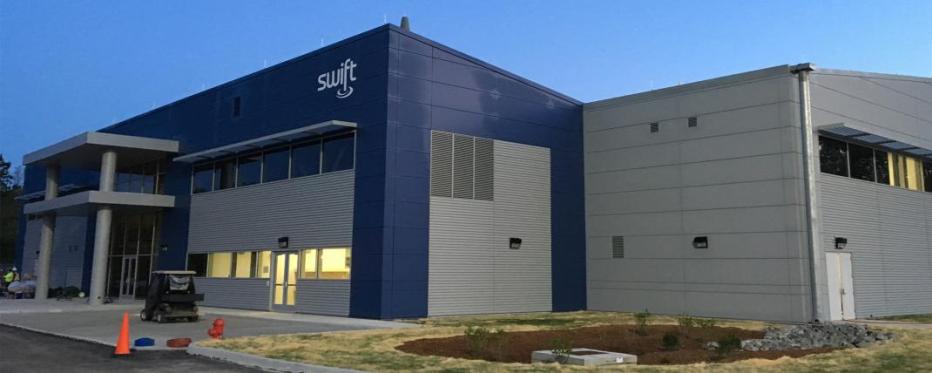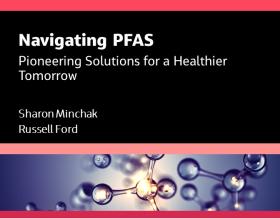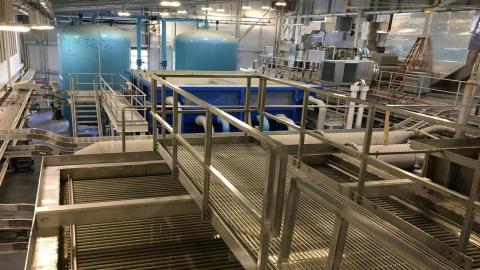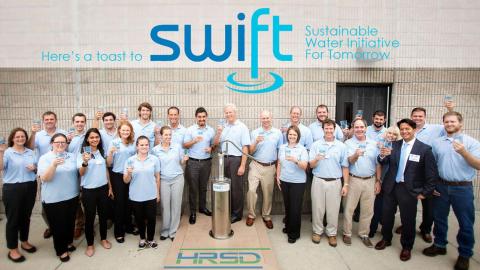
The coastal region of Virginia is home to the first successful English settlement, miles of oceanfront white sand Atlantic beaches and 1.7 million people.
It’s also one of the U.S.’s regions most at-risk of devastating climate variability effects such as storm surge flooding and sea level rise.
In fact, according to the Old Dominion University Center for Sea Level Rise, the Hampton Roads area is the second-most vulnerable area in the country to rising seas behind New Orleans – and of the more than 400,000 homes in Virginia at risk for surge damage, Georgetown Climate Center identifies most of them residing in the Hampton Roads region.
The Potomac Aquifer – the region’s primary source of groundwater – is a limited natural resource, meaning it lacks the sufficient ability to recharge naturally. As water is used, the aquifer’s pressure decreases and this reduced pressure has led to land subsidence, or sinking of land, further compounding the region’s susceptibility to rising seas and risk of saltwater contamination. Because Virginians have been using more water than can be naturally replaced in the aquifer throughout the last century (it would take tens of thousands of years for the aquifer to return to its natural state if eastern Virginia were to stop using it today), action needed to be taken to protect the source.
Every day, residents and businesses in the region send around 150-million-gallons of wastewater to Hampton Roads Sanitation District (HRSD), a regional wastewater treatment agency providing service to 18 counties and cities in Southeastern Virginia. This wastewater is then treated to levels clean enough to safely return to area waterways, such as the Chesapeake Bay. Knowing that their water was too valuable to waste, HRSD began exploring how they could do more for their community and the greater environment; questioning if there was a better way to reuse treated water than just sending it back toward rivers and the Chesapeake Bay. That’s how the SWIFT program came to be.
In 2013, HRSD turned to Jacobs to begin evaluating concepts for a groundbreaking potable reuse project. Born out of an existing general engineering services contract, our involvement on SWIFT has turned into years of follow-on work, helping to establish a six-phase program aiming to protect the region’s environment, enhance the sustainability of the region’s long-term groundwater supply and help address environmental pressures such as Chesapeake Bay restoration, sea level rise and saltwater intrusion.
-
400 K
homes in Virginia gaining better protection from rising sea levels
-
90 %
expected reduction of discharge from SWIFT facilities
-
100 M
gallons of water/day recharging the Potomac Aquifer by 2030
“The Sustainable Water Initiative for Tomorrow is vital to proactively addressing our water, environmental and economic needs not only for today, but for generations to come. We know that Virginians want forward-looking solutions to tackle today’s problems. Our water is too valuable to waste – and SWIFT allows us to recapture this important resource and use it to address our depleting groundwater supply while addressing multiple other water related environmental challenges.”
One region’s bold, SWIFT response to water scarcity
Threats to drinking water sources, such as aquifers, polluted water bodies and insufficient storage can be just as devastating as leaky pipes or outdated treatment plants – and with no new water on Earth, we can’t afford to use water once.
The SWIFT program began in 2013 with an initial feasibility assessment to identify potential treatment processes to meet drinking water quality standards. We evaluated wastewater treatment plant effluent quality and presented three viable advanced treatment concepts and costs to HRSD. Each of these treatment options provided a multi-barrier approach to both pathogens and organics, which is critical to advanced treatment and the production of safe drinking water.
We also conducted groundwater modeling scenarios to verify the expected benefits of injecting the recharge water into the Potomac Aquifer, which ultimately allowed HRSD to move forward with selecting two of the treatment processes for pilot testing.
HRSD elected to perform side-by-side testing of the Granular Activated Carbon (GAC)-based and Reverse Osmosis (RO)-based treatment options to confirm their ability to produce water that exceeds drinking water standards, and to compare performance. Pilot testing took place on the RO-based pilot from June 2016 to December 2016, while the GAC-based pilot was operational from July 2016 to October 2017, providing adequate time for apples-to-apples comparison of the different treatment processes treating the same source water. Both pilots took place at HRSD’s York River Treatment Plant, one of HRSD’s seven candidate treatment plants for advanced water treatment and subsequent groundwater injection. During this phase, we also assisted with the drilling, development and analysis of two test wells to verify the aquifer hydraulics and water quality and conducted a series of geochemical compatibility analyses to ensure successful injection.
Rather than moving immediately to full-scale implementation, HRSD elected to proceed with a state-of-the-art 1 MGD demonstration facility using GAC-based treatment located at another one of HRSD’s eligible SWIFT candidates, the Nansemond Treatment Plant. The GAC-based treatment process was selected for the Research Center based on its pilot performance, preferential cost, avoidance of brine treatment and discharge challenges and projected compatibility with the native groundwater. HRSD will then inject the SWIFT Water into the aquifer and monitor results at the site for one year to inform design criteria for the full-scale facilities. We’re working with HRSD on the required regulatory steps for the future full-scale facilities that will reach over 100-million-gallons per day by 2030.
Our hydraulic modeling suggests that injecting SWIFT Water back into the aquifer may reduce the effects of sea level rise dramatically and positively improve the Potomac Aquifer – which spans across the eastern United States from Georgia to New Jersey. This increased coastal pressure would also lessen the risk of salt water intrusion. The thorough and proven steps of SWIFT’s GAC-based treatment processes ensure that the water is reliable, safe and protective of the region’s precious groundwater source. Replenishing the Potomac Aquifer with HRSD’s SWIFT Water can help slow or even reverse the sinking of land due to withdrawals from the source.
Following full-scale implementation of the SWIFT program, HRSD expects to only need to discharge treated water through existing permitted outfalls into local rivers occasionally during significant storms at the facilities where SWIFT is implemented. At those facilities, SWIFT will successfully eliminate more than 90 percent of HRSD’s discharge, reducing nutrients entering the receiving streams, and in turn the Chesapeake Bay.
In 2018, the U. S. Water Alliance awarded SWIFT the prestigious U.S. Water Prize in the public sector, celebrating its outstanding achievement in the advancement of sustainable, integrated and inclusive solutions to water challenges. Additionally, the Climate Change Business Journal recognized SWIFT with a 2018 Project Merit award for Climate Change Adaptation and Resilience.



















































